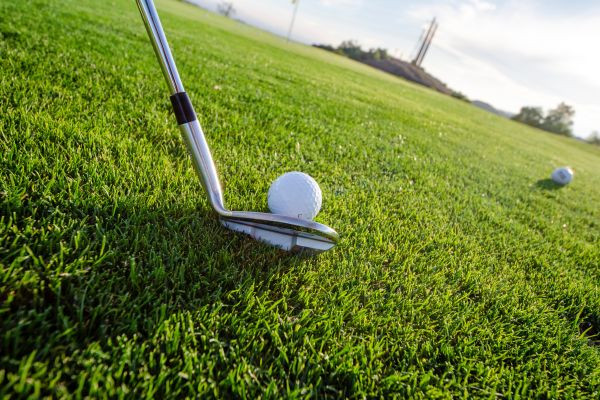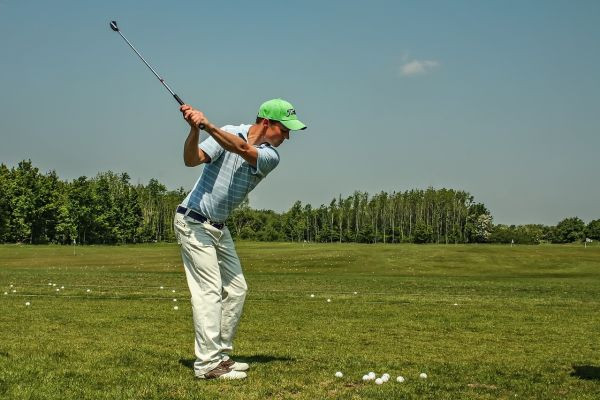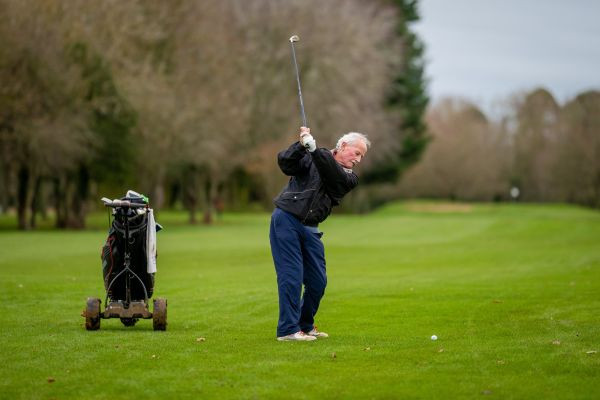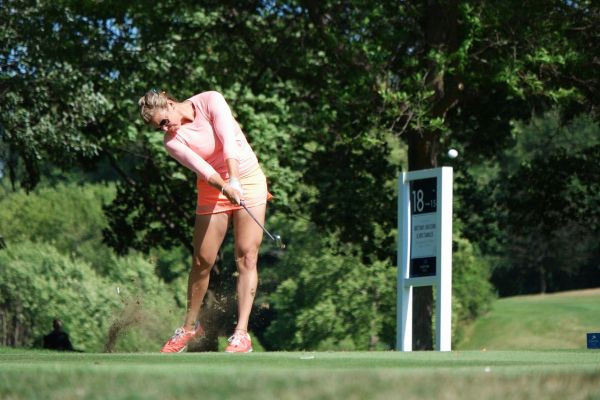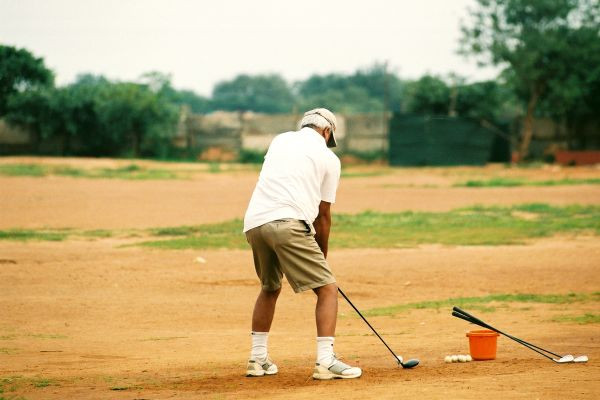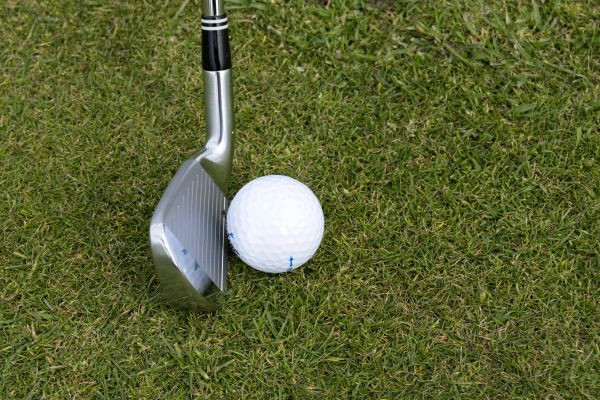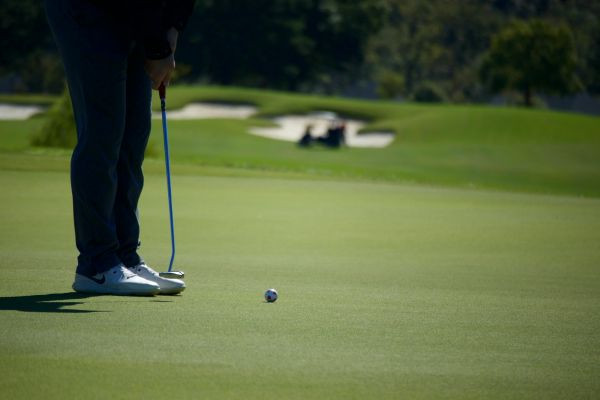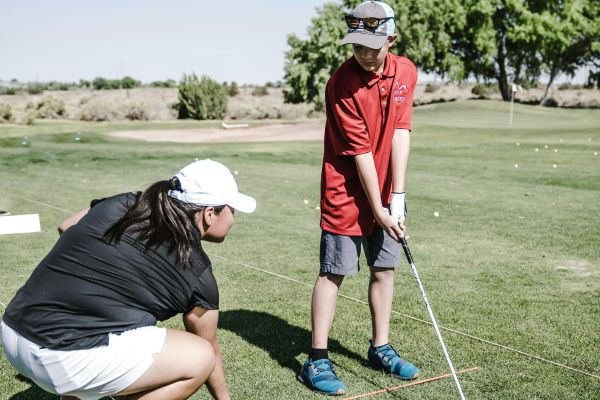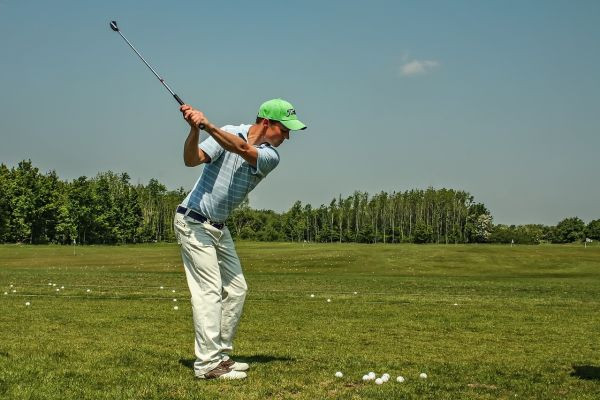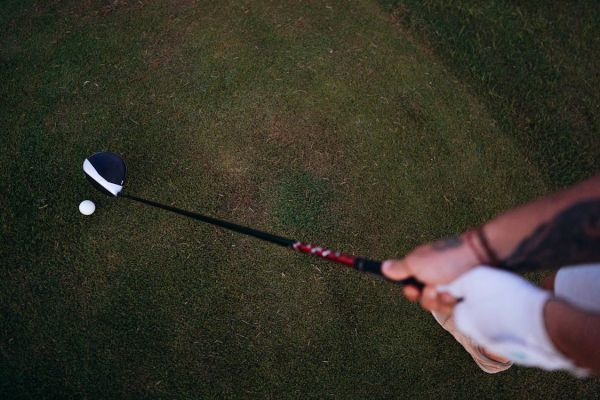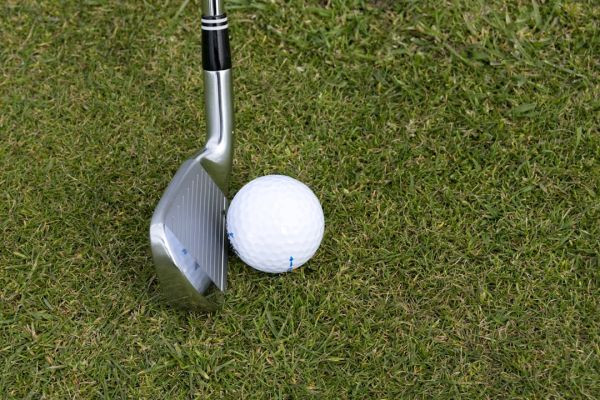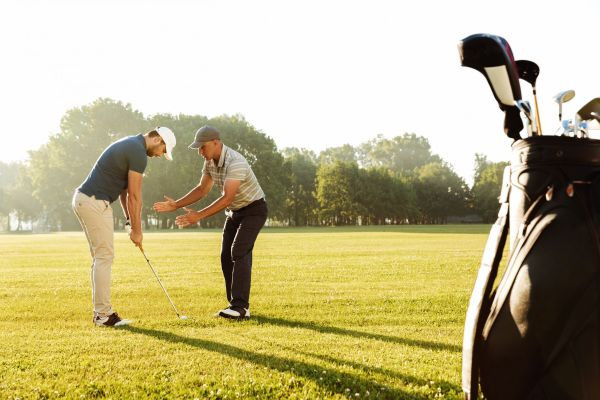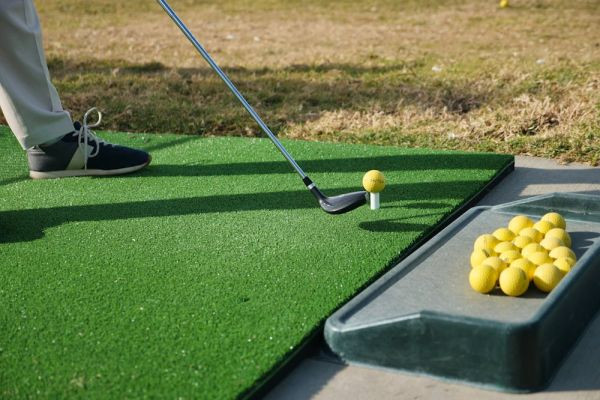Revolutionary Tips for Hitting Your Driver Straight Every Time
Golf, a game of precision and skill, often hinges on the ability to drive the ball straight. While it may seem straightforward, driving straight is a complex skill shaped by various factors. This arti..

Golf, a game of precision and skill, often hinges on the ability to drive the ball straight. While it may seem straightforward, driving straight is a complex skill shaped by various factors. This article explores comprehensive strategies to master this essential aspect of golf from swing dynamics to equipment selection.
The Importance of a Stable Stance
The journey to a successful drive begins with your stance. Often overlooked in its significance the stance is the foundation upon which a golfer's swing is built. A well-positioned stance does more than just align the body; it sets the rhythm for the entire swing.
Ideally positioned shoulder-width apart, the feet create a balanced and powerful base. This alignment ensures stability throughout the swing, enabling the golfer to maintain control and channel the power effectively from the ground up.
The distribution of weight on the feet, the bend in the knees and the tilt of the hips all contribute to a poised stance ready to unleash a potent and precise drive.
Understanding Golf Swing Dynamics
The golf swing represents a unique intersection of art and science. On one hand it is an expression of individual style and technique while on the other hand it adheres to fundamental principles of physics.
A straight drive hinges on crafting the perfect arc with the club, a feat that demands an intricate understanding of swing dynamics. Several factors influence this arc:
- The speed at which the club travels.
- The angle of the swing relative to the ground.
- The point of contact on the ball.
Mastery of these elements is essential to enhance driving accuracy. It involves a harmonious blend of power and control, requiring the golfer to generate significant speed while maintaining a precise swing path. This balance is key to ensuring the ball travels straight, cutting through the air with minimal deviation.
Key to a Successful Backswing
The key to a backswing in golf goes beyond being an introduction to the main action; it plays a crucial role in setting the stage for a strong and accurate drive. To achieve a backswing it is important to embrace the idea of controlled movement. This entails executing a deliberate motion that seamlessly integrates the movement of your arms and shoulders. Maintaining a rhythm that feels natural yet purposeful is essential.
One common mistake during the backswing is over rotation. This happens when golfers try to generate power by extending their backswing beyond what feels comfortable. Unfortunately such excessive extension disrupts the fluidity of the swing and can lead to inconsistencies in both the swing path and clubface alignment upon impact. Another frequent error is rushing through the swing. A hurried backswing results in a lack of synchronization between your lower body and the upper body which compromises stability and balance—both vital for achieving a powerful drive.
To master your backswing, pay attention to key elements. Firstly ensure that your grip on the club is firm yet relaxed.
As you start your backswing, focus on rotating your shoulders while keeping your arms loose. This motion initiated by the shoulders helps maintain the swing path. It's important for your hips to rotate at a slower pace compared to your shoulders creating a coiling effect that stores energy to be unleashed during the downswing. Lastly pay attention to keeping your head still, providing a stable point around which your body can rotate.
Mastering the Downswing
The downswing is where the magic happens. It's the moment when all the potential energy accumulated during the backswing is converted into energy and transferred to the ball. The transition, from backswing to downswing should flow smoothly and seamlessly. Avoid abrupt transitions as they can result in loss of control and power negatively affecting both trajectory and direction of the ball.
The key lies in its fluidity and timing. Initiate the downswing with a shift of weight towards your lead foot followed by a downward motion of your arms and hands. Maintaining wrist flexibility for as long as possible is crucial, in order to maximize power.
The hips play a critical role at this stage as they should unwind and lead the downswing pulling the body into the shot. This movement driven by the hips allows for a flow of the body, arms and club as they follow through towards impact.
During the downswing it is important to keep your head down and focus your eyes on the ball. This ensures stability and consistency in your impact position. The goal is to strike the ball with a square clubface, which is essential for achieving a straight drive. As you approach the impact zone your body should be dynamic yet controlled, poised to deliver power by connecting the clubface with the ball.
The Crucial Role of Spine Angle
The angle of your spine plays a part in the biomechanics of a golf swing particularly when aiming for a drive. A proper spine angle establishes an axis around which your entire swing rotates greatly contributing to both consistency and power in your shots. It is recommended to have a tilt of the spine away from the target when addressing the ball.
This position not only helps achieve the balance but also establishes an ideal swing path. However it is equally important to maintain the spine angle throughout the swing as it is to set it correctly at the beginning. Leaning forward can result in a steep swing path often leading to a slice or topping the ball while leaning too far backward may cause a hook or result in hitting the ball flat. The objective is to keep the angle consistent, from the start of the backswing until impact. This consistency ensures that the clubface returns squarely to the ball promoting drives.
The Grip: Your Connection to the Club
The grip serves as a golfer's connection with the club and plays a crucial role in controlling both their swing and ultimately how they hit the ball. It is through their grip that golfers communicate their intentions to the club determining how square or open/closed their clubface will be, at impact. There are various grip styles including Vardon (overlapping) interlocking and baseball grips. Each style has its advantages and golfers choose based on what feels most comfortable and natural for them individually.
The Vardon grip, where the trailing hand's pinkie finger overlaps the leading hand's index finger, is widely used for its balance of control and flexibility. The interlocking grip, where the pinkie of the trailing hand interlocks with the index finger of the leading hand, is often preferred by golfers with smaller hands as it provides a firmer hold on the club. The baseball grip, where all ten fingers are on the club, is sometimes favored by beginners for its simplicity and ease of use.
Regardless of the style, the key is a grip that is firm enough to maintain control of the club throughout the swing but relaxed enough to allow a fluid motion. A grip that is too tight can restrict the natural movement of the wrists, while a grip that is too loose can lead to a loss of control over the clubface.
Hip Movement and Its Influence
The hips play a pivotal role in the power and direction of a golf shot. During the downswing, the hips initiate the movement, creating a kinetic chain that transfers energy through the torso, shoulders, arms and finally to the club. This hip movement should be smooth and controlled, often described as a turn or a rotation.
The key is to avoid excessive lateral movement (sliding) or swaying of the hips, as these can disrupt the balance and alignment of the swing. Ideally, the hips should start the downswing with a slight rotational movement towards the target. This rotation helps to align the clubface correctly at the point of impact, contributing to a straighter drive.
Moreover, proper hip movement creates a separation between the lower and upper body - a critical element in generating power. As the lower body initiates the downswing with the hip turn, the upper body and arms follow, creating a whipping effect that adds speed and force to the swing. When executed correctly, this sequence increases the distance of the drive and enhances its accuracy.
Head Positioning: A Critical Factor

The position and movement of the head play a vital role in the overall mechanics of a golf swing. Keeping the head steady throughout the swing is essential for maintaining balance and ensuring a consistent swing path. Unnecessary head movement such as lifting or turning the head prematurely can disrupt the body's alignment and the swing's trajectory. This often leads to skewed shots where the ball veers off the intended straight path.
The key is to focus on a specific spot on the golf ball and keep your head centered over this spot throughout the backswing and downswing. This discipline helps align the body correctly and enables the golfer to execute a powerful and controlled swing. It's also crucial for timing as erratic head movement can lead to mistiming the impact resulting in either a weak shot or a complete miss-hit.
Achieving the Perfect Finish
The finish of a golf swing is as important as the start. A balanced and controlled finish is a reliable indicator of a well-executed swing. The ideal finishing position involves ending the swing with most of your weight shifted onto the front foot. This weight transfer is a natural outcome of a correct downswing where the body moves in harmony with the arms and the club.
A proper finish not only looks graceful but also serves a functional purpose. It ensures that the swing has followed through completely maximizing the power transferred to the ball. Additionally a balanced finish helps in maintaining the swing path and clubface orientation both critical for hitting the ball straight. In this position your body should be facing the target and your back foot should come up on its toe signifying a full-body turn.
Common Mistakes to Avoid
Even seasoned golfers can fall prey to common mistakes that hamper their drive. One of the most frequent errors is over-swinging. This usually happens when golfers try to hit the ball too hard causing a loss of control and balance in the swing. The key is to swing within yourself and focus on rhythm and timing rather than brute force.
Another common mistake is an improper grip. A grip that is too tight can restrict the natural motion of the wrists while a grip that's too loose may lead to a lack of control over the club. Regularly checking and adjusting your grip is essential for maintaining consistency in your shots.
Incorrect stance is also a prevalent issue. An unbalanced stance or incorrect alignment can set off a chain of compensations in the swing leading to erratic shots. It's important to ensure that your feet, hips and shoulders align correctly with the target and that your weight is evenly distributed at the address.
Practice Drills for Improvement
Improving your driving skills requires not just practice but targeted practice. Incorporating specific drills into your routine can significantly affect your driving accuracy. One effective drill is the "one-foot" drill where you practice swinging while balancing on your front foot. This drill helps improve balance and teaches you to properly shift your weight during the swing. Another useful exercise is using "alignment sticks" to ensure your body is properly aligned with your target. Place these sticks on the ground to create a visual guide for your feet, hips and shoulders helping to reinforce correct alignment and swing path.
Consistency in practice is crucial for making tangible progress. Regularly engaging in these drills helps in ingraining the correct muscle memory and fine-tuning your swing mechanics. Setting aside dedicated time for practice and focusing on specific aspects of your swing will lead to noticeable improvements in your driving accuracy.
Advanced Techniques for Seasoned Golfers
For the experienced golfer the pursuit of perfection is a continuous journey. Advanced players should focus on fine-tuning their skills through minor but impactful adjustments. Experimenting with grip pressure can yield significant results. A slight change in how tightly you hold the club can affect the fluidity of your swing and the clubface's position at impact.
Adjusting stance width is another area for potential improvement. A wider stance can offer more stability while a narrower one might allow for greater mobility. Finding the right balance that suits your style can enhance both power and precision.
Modifying swing speed is also an area where seasoned golfers can find gains. The key is to find the optimal speed that maximizes distance without sacrificing accuracy. This often involves working on timing and rhythm to ensure that the peak speed occurs at the moment of impact.
Equipment Check: Choosing the Right Driver
The right equipment can make a significant difference in your game. When selecting a driver several factors need to be considered to ensure it complements your swing style. The loft of the driver is crucial; a higher loft generally makes it easier to hit the ball in the air and can help reduce side spin leading to straighter drives. Conversely a lower loft can increase distance for players with faster swing speeds.
Shaft flex is another important consideration. The shaft's flexibility should match your swing speed to optimize the power and control of your drives. A shaft that is too stiff or flexible can lead to timing issues and off-center hits.
Finally the clubhead size can impact your performance. Larger clubheads offer more forgiveness on off-center hits while smaller heads can provide more control for skilled players. Balancing these factors against your skill level and preferences is key to choosing a driver that will help enhance your ability to drive the ball straight and far.
Conclusion
Achieving consistency in driving straight is a journey that combines skill development, understanding and patience. This journey is unique for every golfer as it involves mastering the technical aspects of the swing and understanding the nuances of your body mechanics and how they interact with the equipment you use. Regular practice is essential in this process. It's not just about hitting balls at the range but about mindful practice where you focus on specific aspects of your swing, assess your progress and make adjustments as needed.
Frequently Asked Questions (FAQ)
What's the ideal stance width for a straight drive?
A shoulder-width stance is generally ideal as it provides the necessary balance and stability required for a straight drive. This stance allows for efficient weight transfer and stability during the swing which is crucial for consistent ball striking.
How important is club selection in driving straight?
Club selection is extremely important. The right driver tailored to your swing speed style and preference can significantly enhance your accuracy and overall performance. A well-chosen driver can complement your natural swing tendencies and help reduce common faults like slices or hooks.
Can grip style affect driving accuracy?
Absolutely. The grip is your only physical connection to the club so finding a grip style that offers both control and comfort is crucial in affecting your driving accuracy. A proper grip ensures better clubface control at impact leading to straighter shots.
What's a common mistake in the golf swing?
Common mistakes include over-swinging or rushing the backswing. Both can disrupt the balance and rhythm of your swing leading to less accurate drives. Over-swinging often causes loss of control while rushing the backswing can lead to misaligned shots.
How can I correct a slice in my drive?
To correct a slice, focus on your grip ensuring it's neither too tight nor too loose, maintain a proper stance and work on ensuring a smooth swing path that follows through directly to your target. Also ensure your clubface is square at the point of impact for straighter drives.
Are there specific drills to improve straight drives?
Yes, drills such as the "alignment stick" drill can significantly improve your ability to drive straight by reinforcing proper swing alignment and path. Consistent practice with these drills can help ingrain the right muscle memory for a straighter and more reliable drive.



